I’ll always have a soft spot for Ghost Recon Wildlands; That was the game that I got so into that I began creating guide content for it, which eventually lead to the launch of Ghost Gamer News after Ghost Recon Breakpoint was released.
Ghost Recon Wildlands: Tactical-lite gameplay or tacticool Barbie simulator?
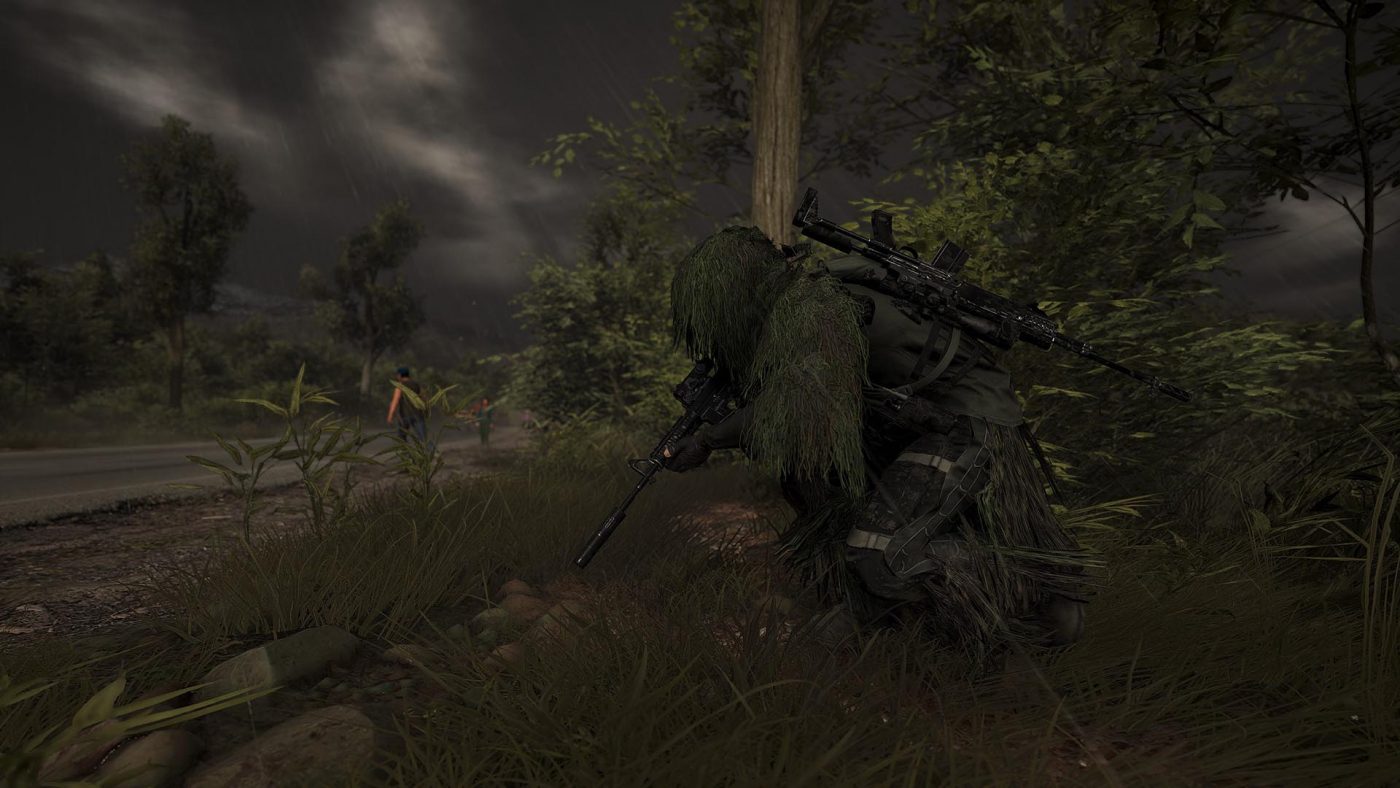
If you came from the old-school Ghost Recon series you’d be forgiven for skipping the latest Ghost Recon releases; the gameplay and story shifted to Ubisoft’s open-world RPG mechanics like most of their titles, and embraced a deeper customization system that also included cosmetics.
Still, the game is solid, especially after resolving the countless issues common with most Ubisoft title launches.
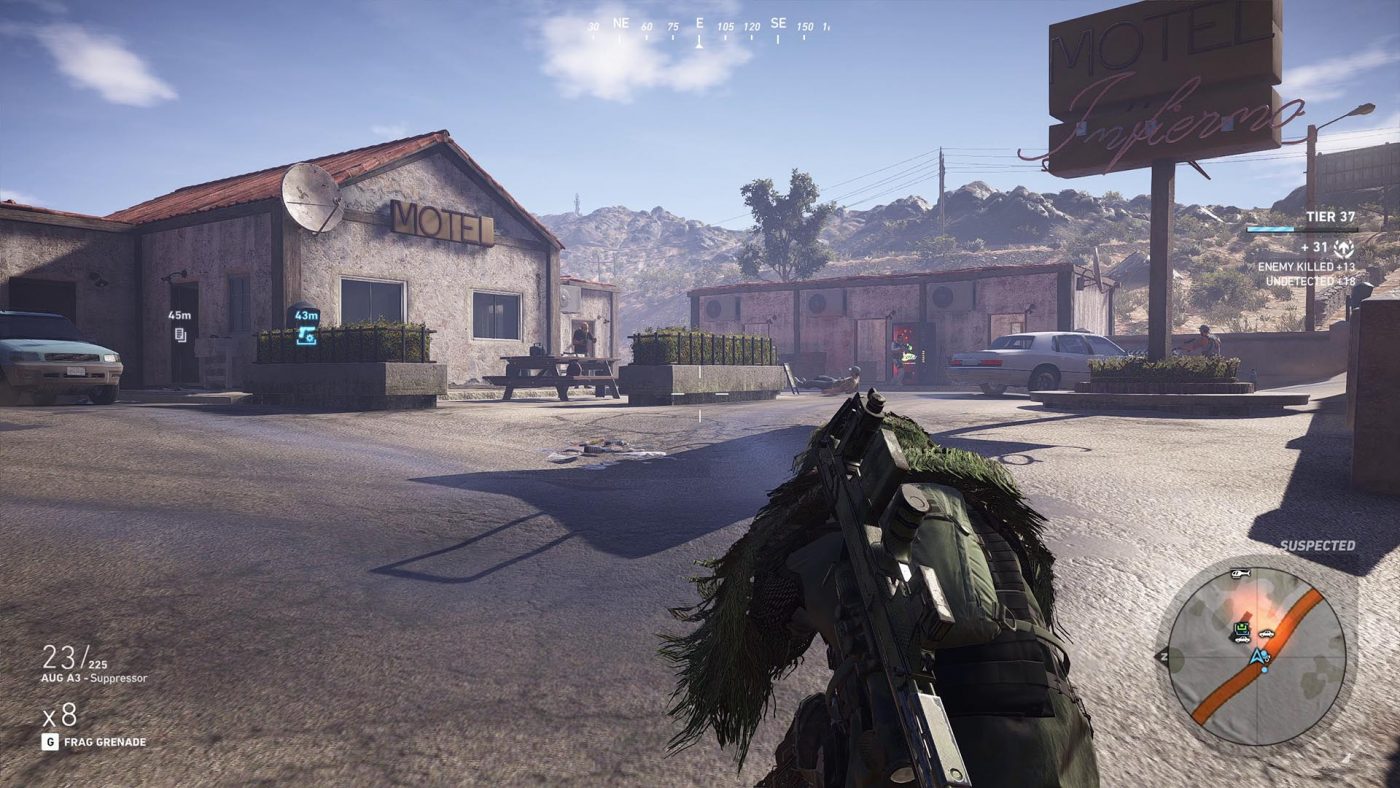
Set in an alternative Bolivia, your objective is to take down the cartel one boss at a time. This is accomplished by investigating regions to unlock story missions, find details about each region’s boss, and then take them out (or, in some cases, capture them).
You have AI teammates to accompany you and later rebels to call on to support your mission, and these are both extremely useful and even critical at higher difficulties in some cases.
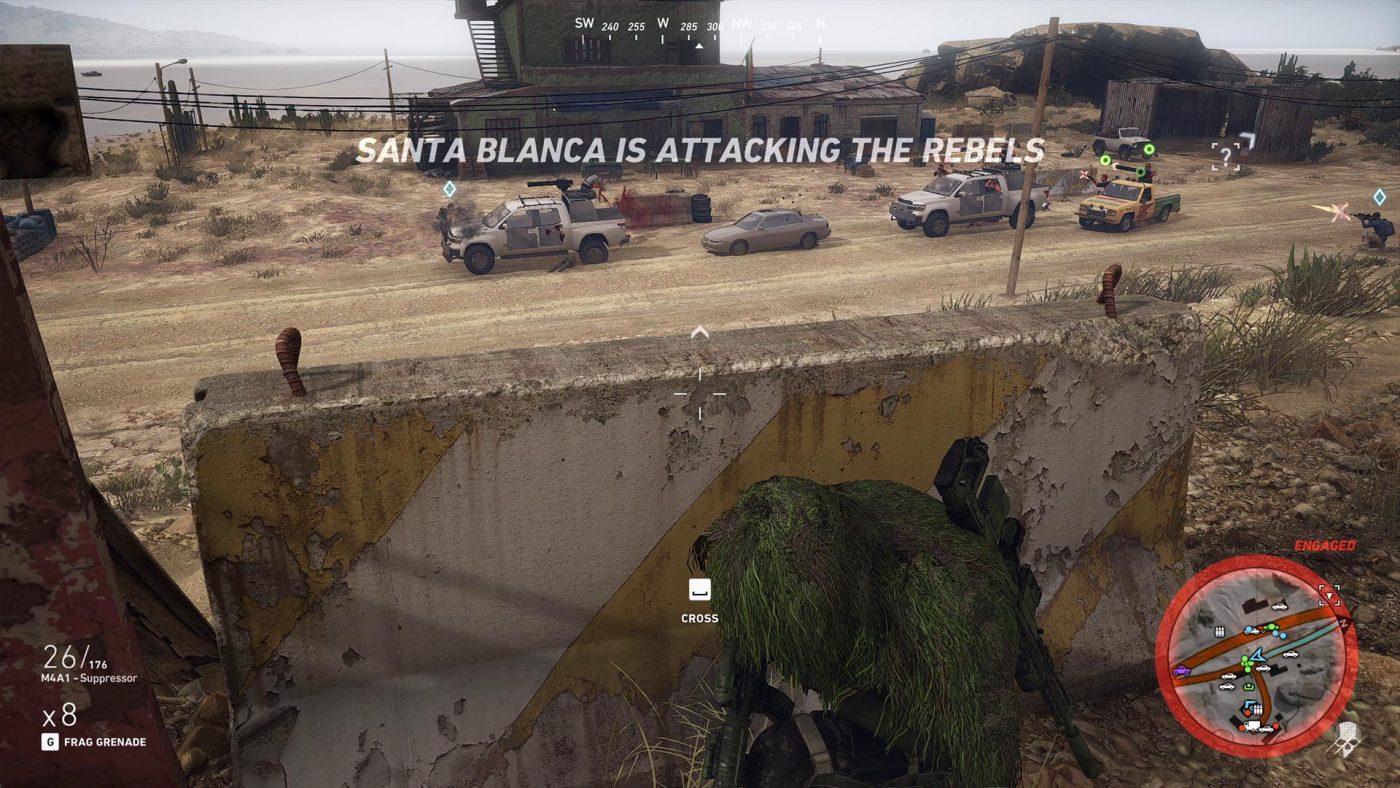
The formula is solid and plays out well without feeling like you’re doing the same thing over and over again.
Additionally, collecting intel will reveal side missions that unlock rebel support skills, additional skill points, and new weapons and weapon attachments.
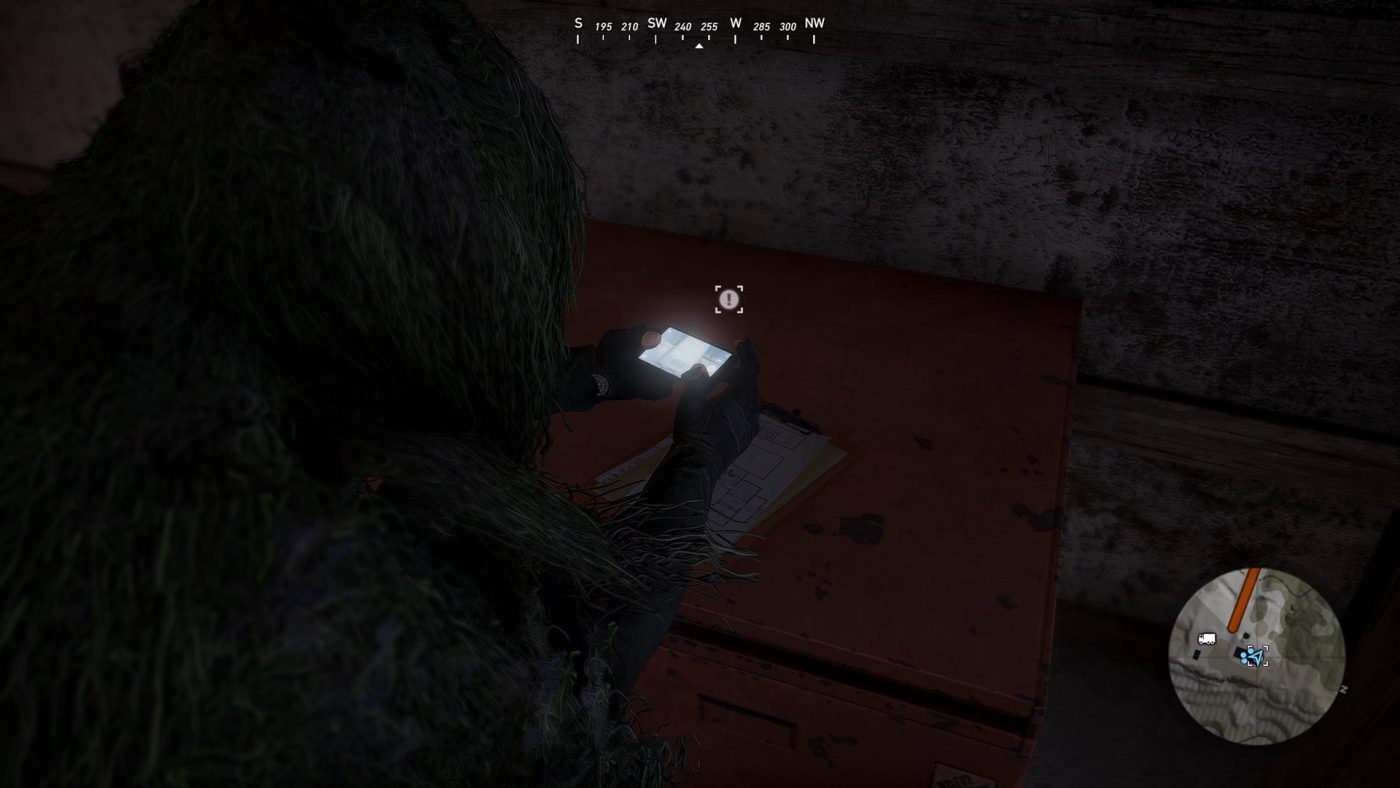
There is very little wasted space here when it comes to playing the main game, and you’ll get a lot of enjoyment out of it. Oh, and getting around that space? A lot of fun, for the most part. Vehicles are abundant and useful, although the physics is a little more loosy-goosy than realistic.. Which can be fun when driving, but less so when flying an airplane.
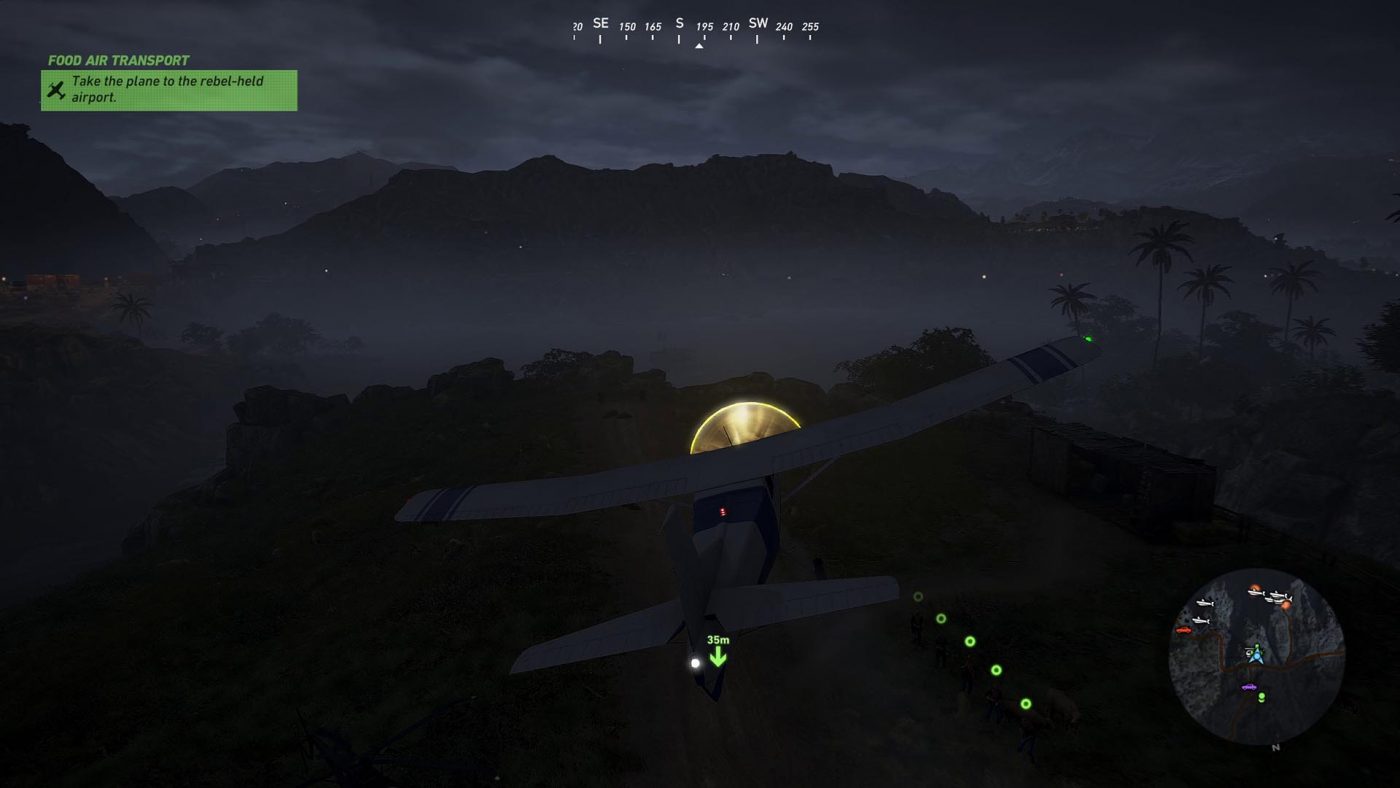
Post-launch there was new content in the form of DLC, but this DLC has widely been panned by just about everybody, so I wouldn’t waste my time unless I got it cheap or free. There was also a Tier mode: This is an additional challenge that unlocks new gear as you progress, getting harder and harder as you play. This mode encourages you to keep playing well after completing the main story, and is genuinely fun and worthwhile.
Next up? Let’s talk about stealth in Ghost Recon Wildlands.
Ghost Recon Wildlands: Stealth sans the tall grass
Ghost Recon Wildlands takes a minimal approach to stealth, and it works. There’s no tall grass, no “you’re hidden” indicator, and no special cloaking system aside from something that’s purely cosmetic as a bonus mission reward.
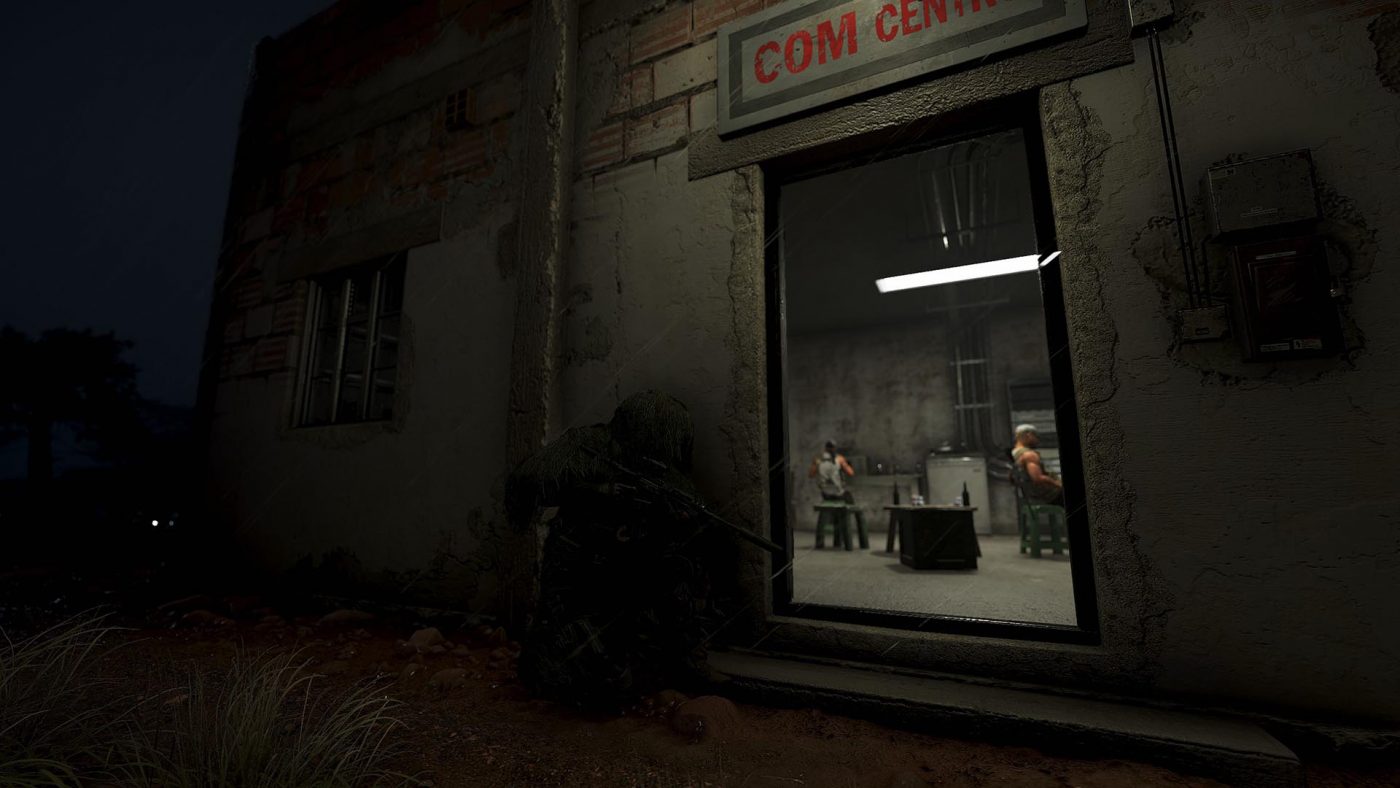
Well, I lied just a bit: While there is no tall grass, you can hide in large bushes, but that is more the exception rather than the rule here.
Stealth here is mostly focused on line of sight, cover, stance and noise levels. It works. You’ve got the standard crouching to move quietly and reduce visibility, as well as going prone for extra stealthiness.
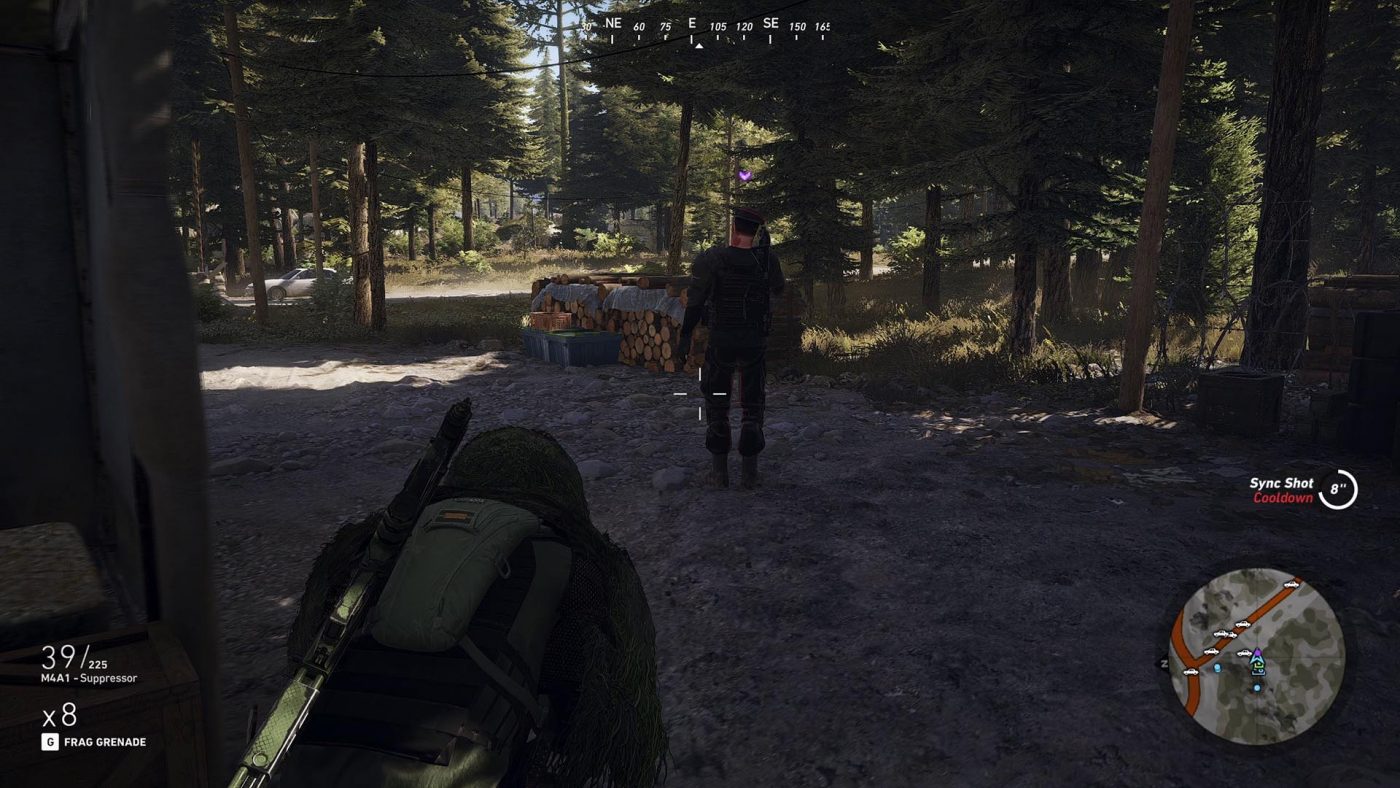
The cover system is good too; It’s not too dissimilar from games like The Division, but in this case it’s an important part of stealth.
All this stealth is fairly important because the game also includes some interesting mechanics attached to discovery: Reinforcements, and – in the case of the Unidad enemies – a “wanted” system not unlike in Grand Theft Auto.
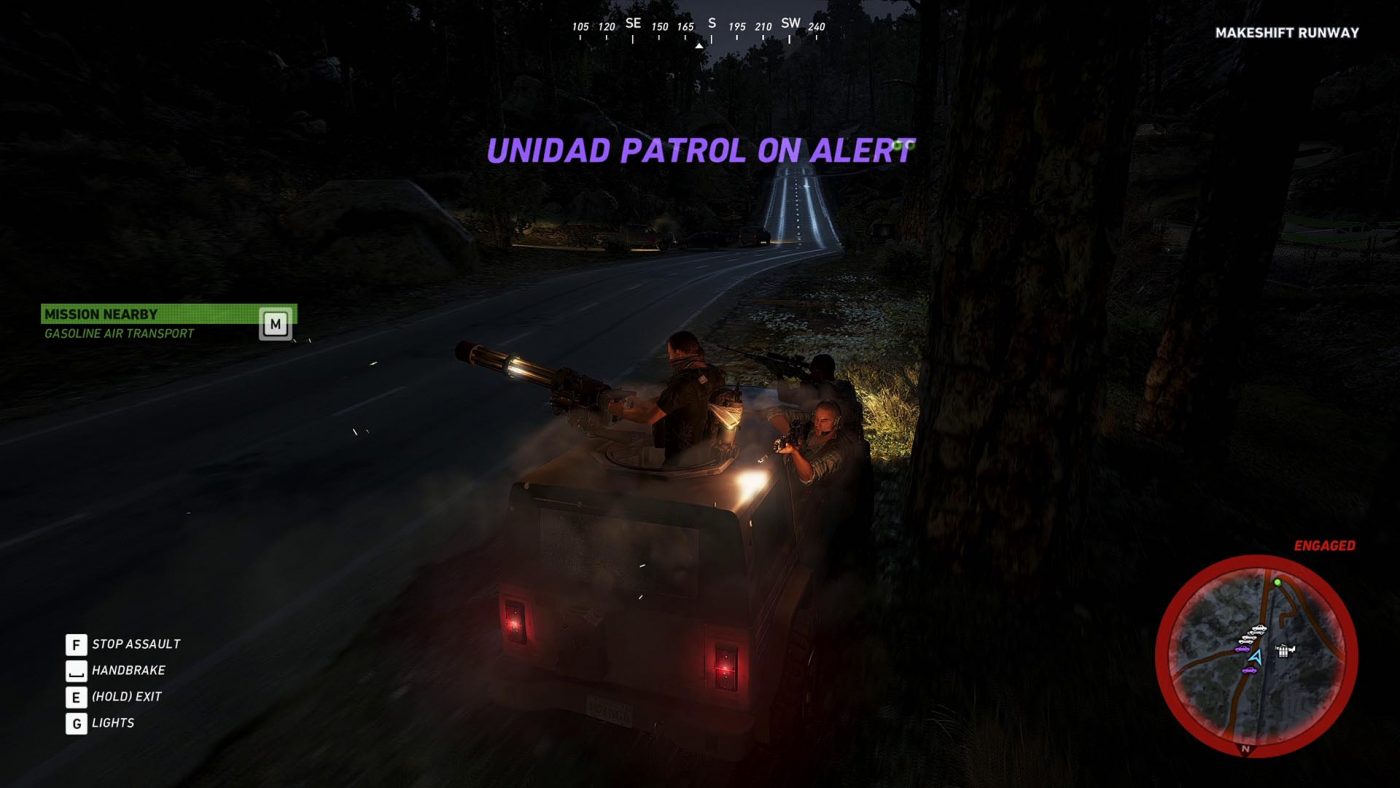
When tackling a base filled with Sicarios – the standard enemies in Ghost Recon Wildlands – discovery can mean that someone will radio in for reinforcements. Those same reinforcements can be practically infinite if you don’t take enemies out quickly enough, so being as stealthy as possible is always a good strategy.
The Unidad are even worse: Get into a firefight with them and you’ll begin to gain threat levels. At threat level one you just attract the standard trucks with a handful of enemies to hunt you down. As you gain threat levels (by not evading the Unidad or continuously engaging with them), you’ll start to have to deal with armored trucks with mounted weapons, attack helicopters, and even heavily armored tank-like vehicles.
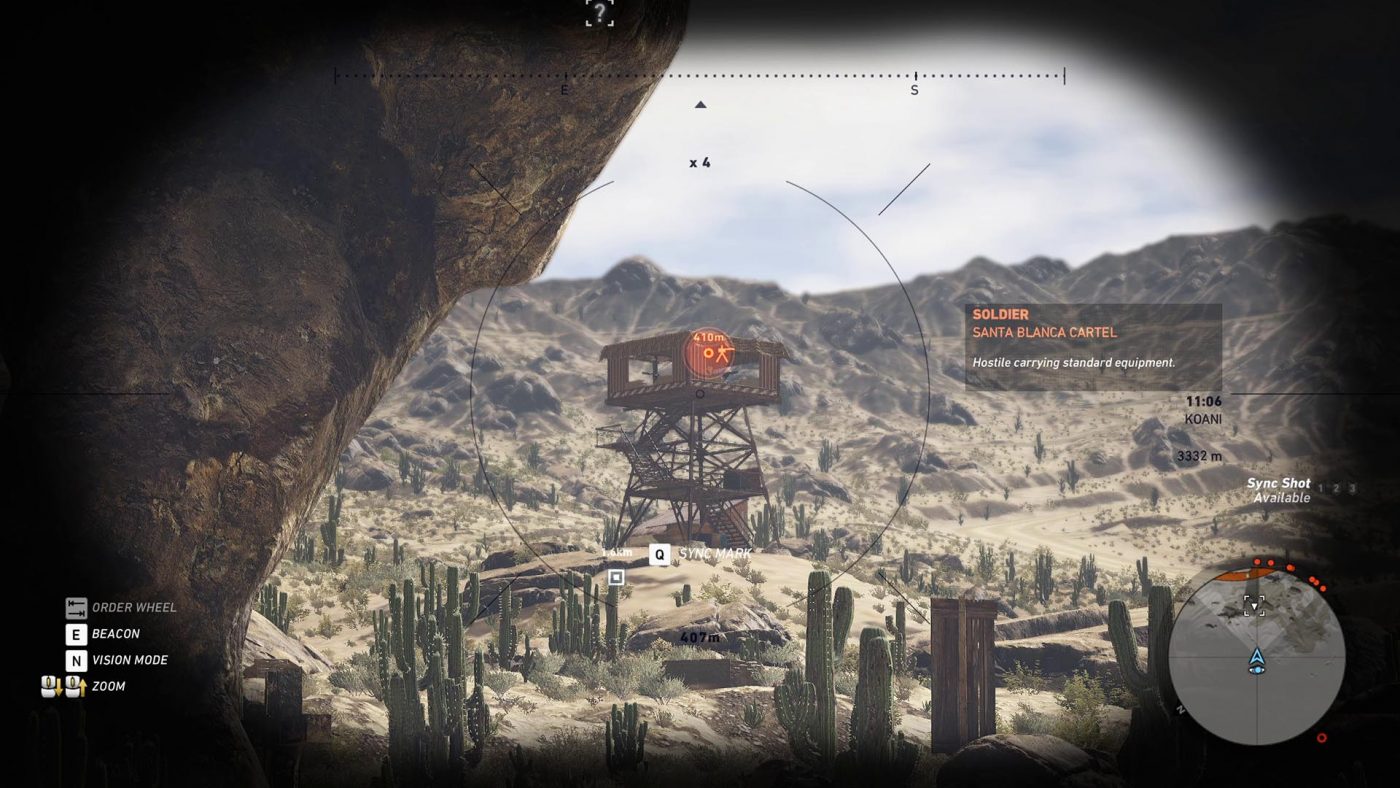
All this encourages you to make use of stealth and solid tactics, planning your engagements accordingly. Make use of suppressors, and use the right weapon – or close-quarters takedown – for the right engagement range. Which leads into the next important question most Ghost Gamer News fans will want answered: How are the weapon mechanics of Ghost Recon Wildlands?
Ghost Recon Wildlands: Guns, guns, and more guns
Ghost Recon Wildlands has a lot of guns, and a lot of ways to customize them. You get most of the guns and attachments by exploring the world, collecting intel, and completing missions.
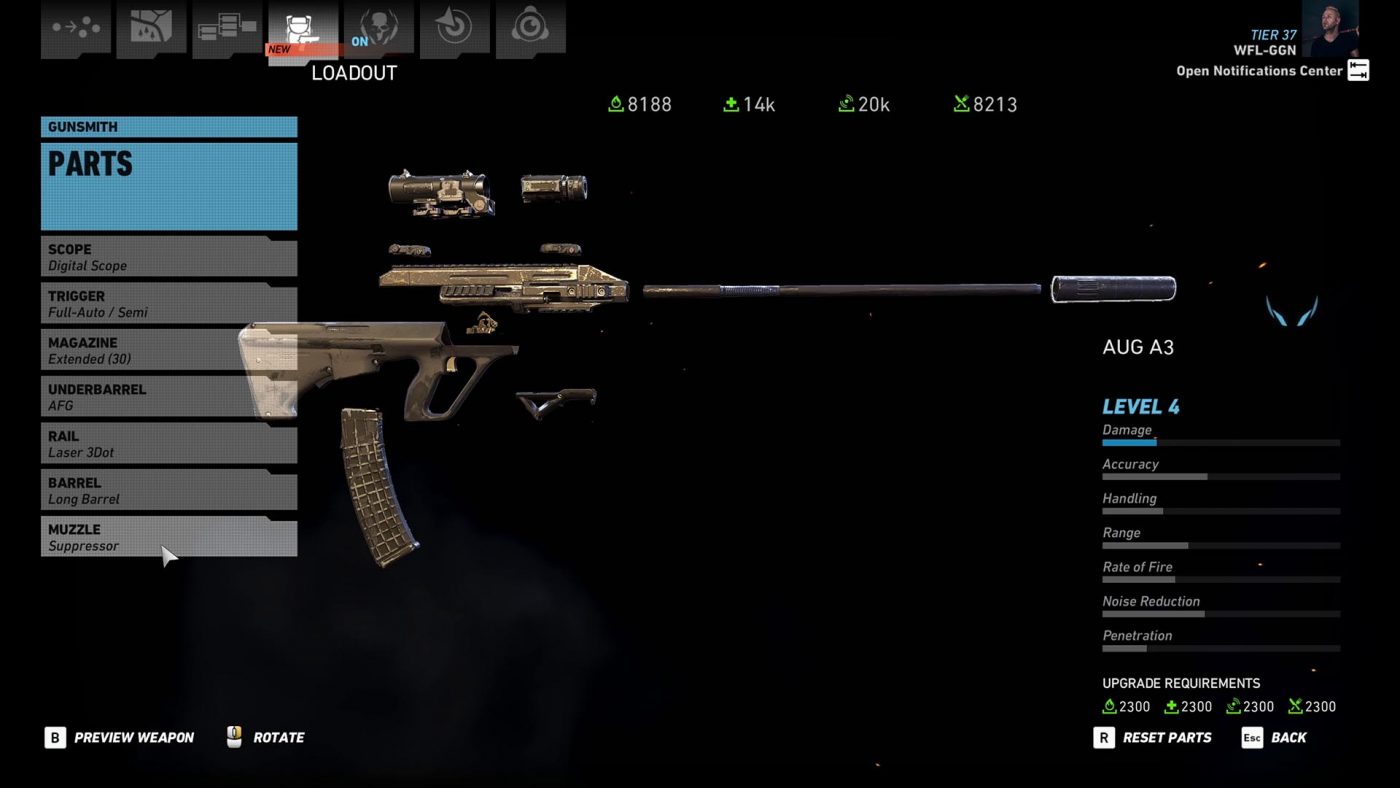
Gunplay itself is wildly important in this game, especially at higher difficulties. Customizing your firearms is also important: Picking the right optics, rail attachments, magazines and more all have an impact on the effectiveness of your weapons.
Ghost Recon Wildlands has a relatively basic ballistics system: You’ll have to deal with bullet drop, but not wind. Penetration of cover is a factor, but only a minor one. Even velocity of the round is a factor here.
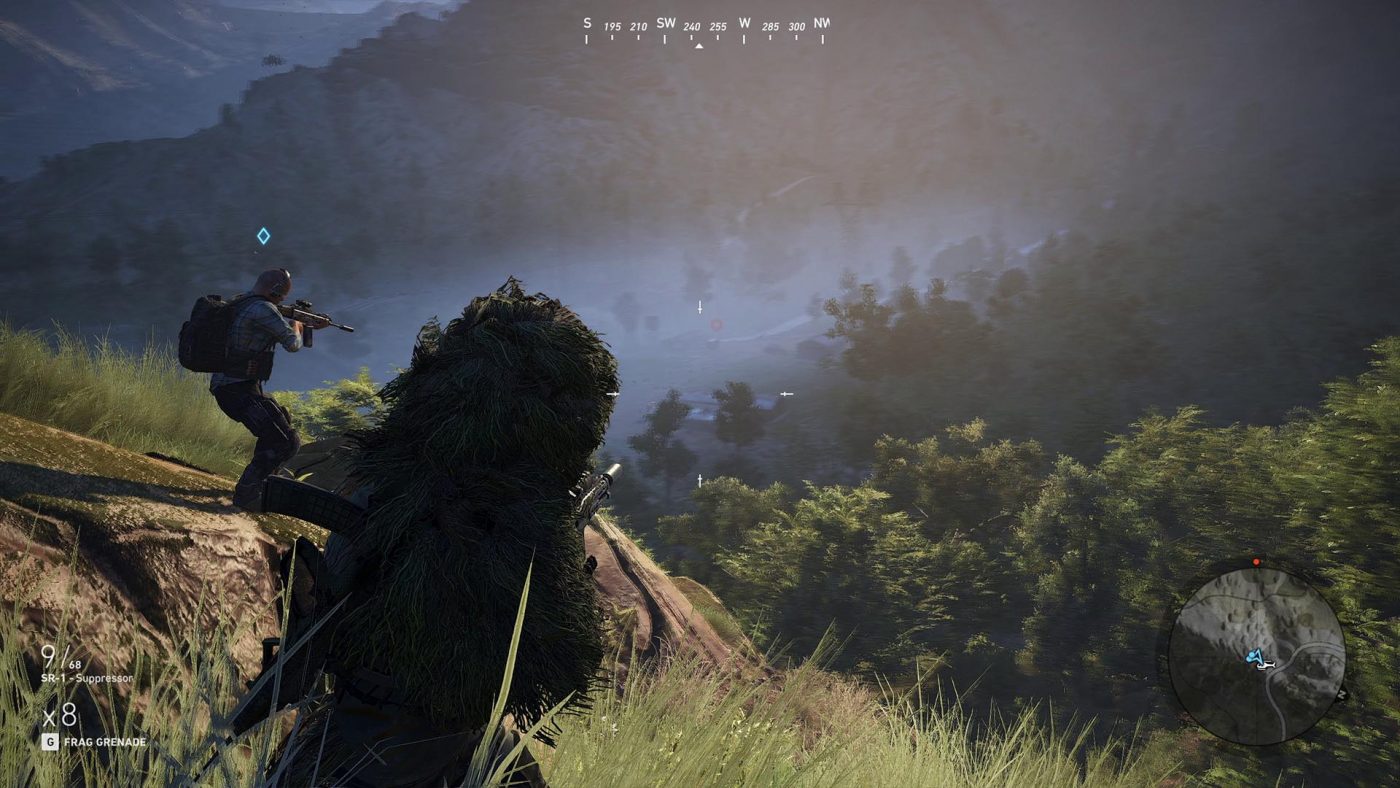
While it’s not as detailed as Sniper Ghost Warrior or Sniper Elite, these mechanics make for a much more interesting game.
Ghost Recon Wildlands was actually the first game I started producing sniper guides for before starting Ghost Gamer News. While you can’t adjust your turrets to compensate for bullet drop and most reticles aren’t even useful as a bullet drop compensator, there are some limited combinations that make long-range sniping relatively immersive. Of course, if you’re so inclined you can plot out your DOPE with any reticle you like, but some are going to be easier than others.
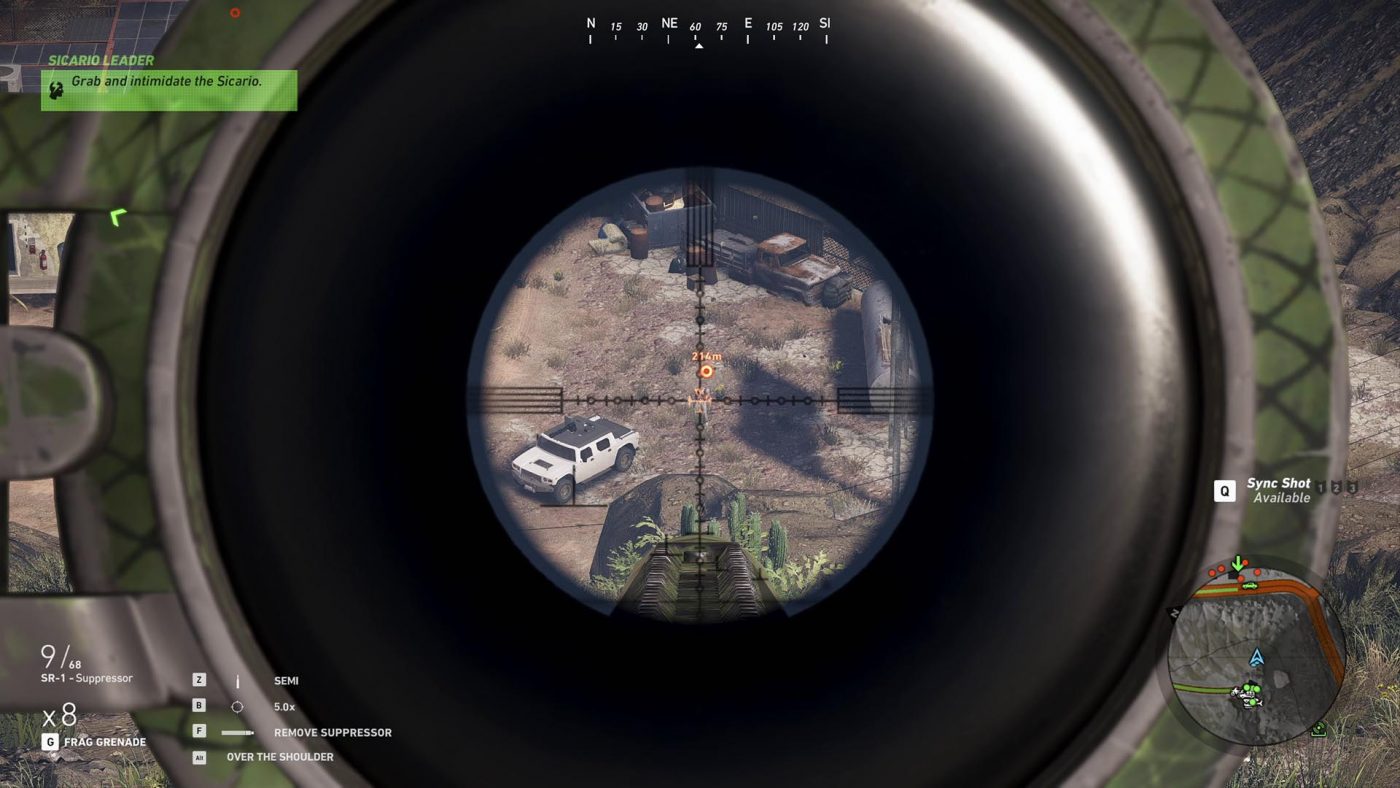
Unfortunately the maximum engagement range in single-player is 600 meters for standard foes; past that and they don’t render in the game world.. Unless you’ve got a friend holding them for you in multiplayer.
This, combined with the mostly awful reticles means that sniping is much more limiting than I’d like.
Still, it’s decent enough and the core game is a lot of fun despite these failings, of which there are a few.
Ghost Recon Wildlands: Should you get it in 2022?
Odds are you’re reading this review because the game has recently become available on XBox Games Pass and you’re considering installing, or even subscribing.
Well, that question isn’t going to be too easy to answer.
Ghost Recon Wildlands is a fun game, for sure. It’s still got life left in it, and you’ll see various LFG posts in various Wildlands communities if you’re interested in multiplayer..
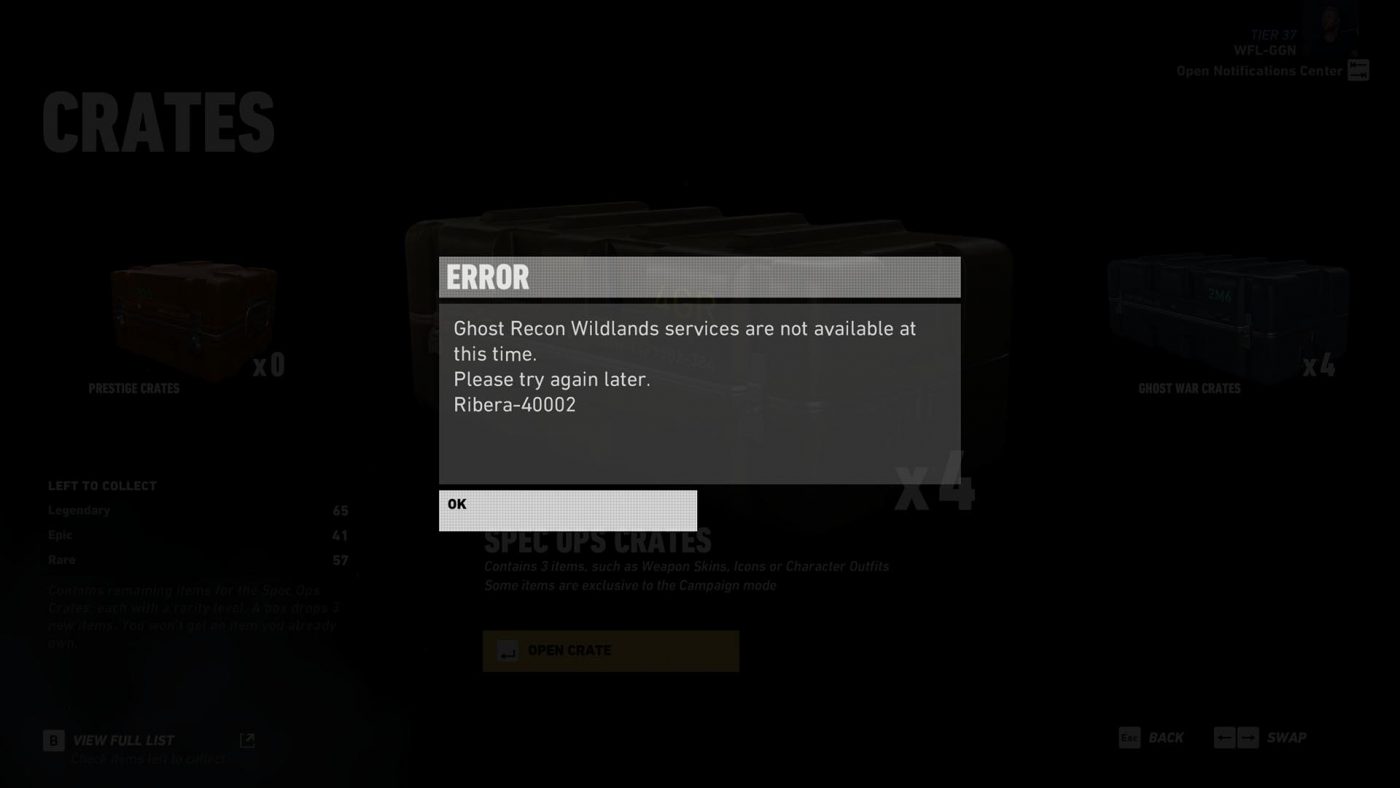
..of course, that assumes Ubisoft even bothers to fix the online mechanics of the game. For a while now server issues have plagued the connected aspects of the game, which not only includes coop and PvP, but.. Microtransactions.
Ubisoft loves microtransactions, and there are a lot here. There are also loot crates, which is a particular bit of evil, but what makes it even worse is that the current long-running server issues prevent people from even opening the loot crates they already have.
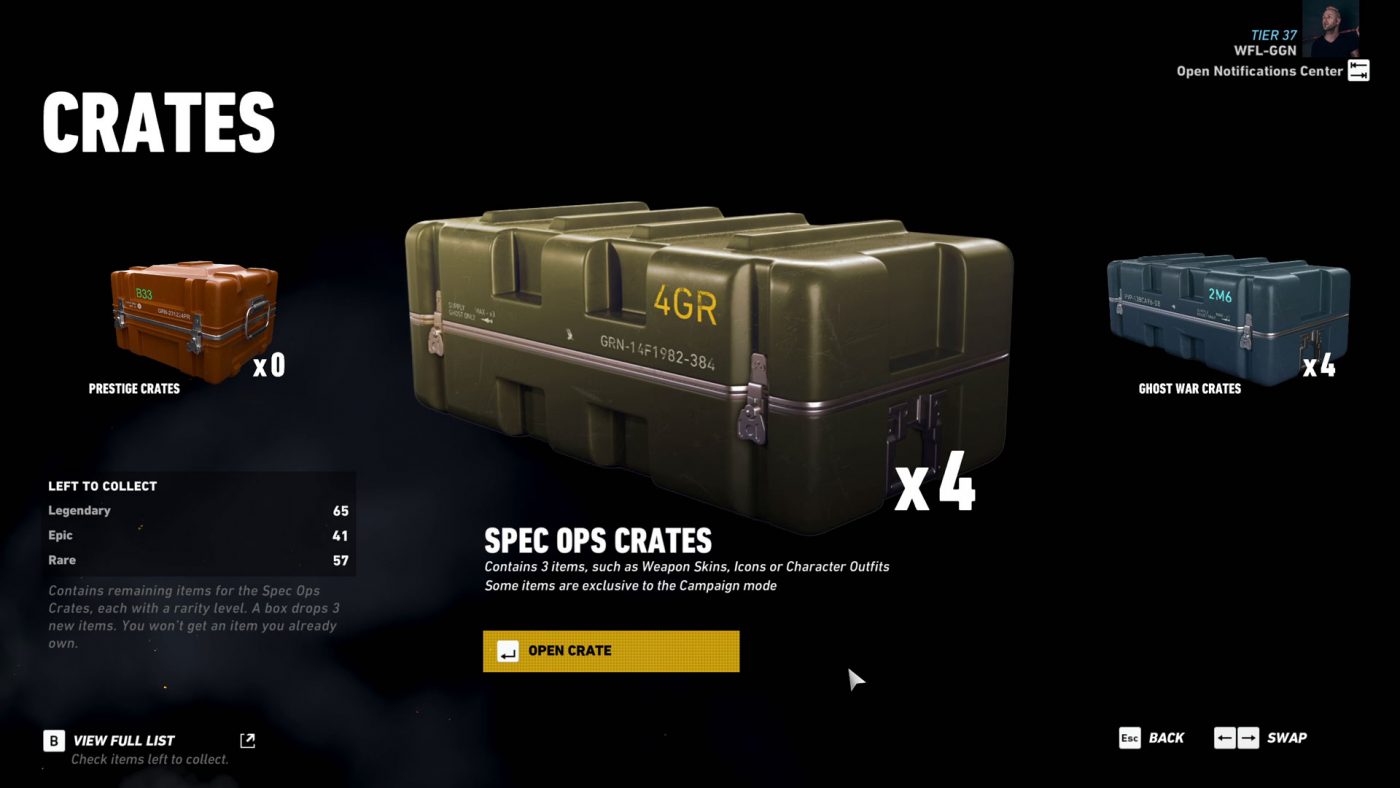
The iffy DLC is also something you should most likely skip.. Especially if Ubisoft decides to drop support for installing it down the road like they have in previous titles.
Still, if you want an open world tactical-lite shooter with some minor RPG mechanics and an expansive game world, grab it and have some fun.
If you’re looking to play online, I’d honestly suggest you check to see if the recent online issues have been resolved.
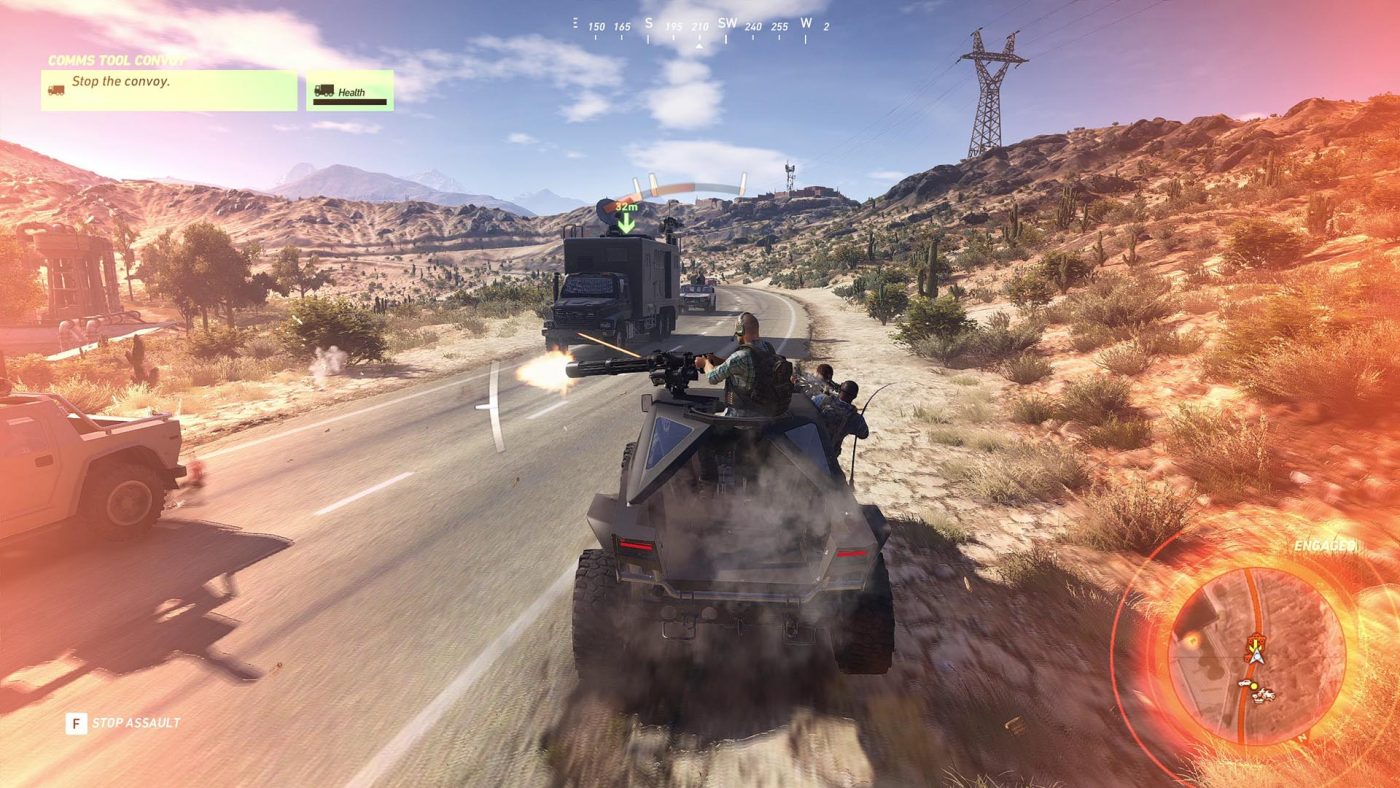
At least Wildlands itself is perfectly playable offline, unlike Ghost Recon Breakpoint.
If you’re hesitant, grab it via the Games Pass or on sale. Ghost Recon Wildlands is still fun in 2022, 5 years after it was released.
